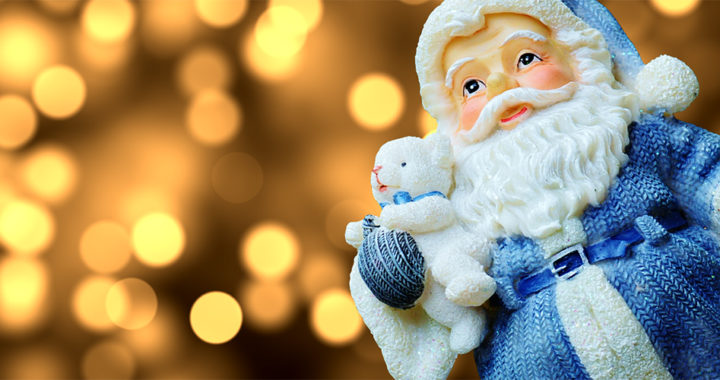Christmas is an annual festival celebrated on the 25th of December across the world to commemorate the birth of Jesus Christ. The nativity stories found in the Gospel of Mathew and Gospel of Luke in the New Testament serve as the foundational basis of Christmas.
It is important to note that the exact birth date of Jesus Christ remains unknown. The choice of the present Christmas date was symbolic. Saint Augustine of Hippo explained in his Sermon 192 that December 25 was the date of the winter solstice in the Roman calendar. This was symbolic because it signified how the revered figure in Christianity bent low and lifted everyone during the shortest day of the year to spread light in the world.
However, despite Christmas being a religious tradition observed by Christians across the entire Christendom, there are arguments tracing the festivity with pagan and pre-Christian traditions.
The Pagan Roots of Christmas: Pagan Traditions Associated with Christmas Celebration
1. December 25 as the Official Foundation of Sol Invictus Cult
English anthropologist Sir Edward Burnett Taylor explained that one hypothesis about the origins of Christmas argued that the modern date of the festivity was intentionally chosen to coincide the founding of the Sol Invictus cult.
Sol Invictus was the official sun god of the later Roman Empire and a patron deity of soldiers. Roman emperor Aurelian made it an official cult on 25 December in CE 274. Subsequent Roman emperors until Constantine the Great favored this deity.
In the book “Toward the Origin of Christmas,” theology and communications scholar Susan K. Roll explained further that the introduction of Christianity in Rome during the fourth century required partial assimilation with traditions related to Sol Invictus. Hence, Jesus Christ was given titles such as “Sun of Righteousness” and “Sun of the Resurrection” while imageries associated with Christianity included logos of the sun.
2. Saturnalia Festivity and Gift Giving During Christmas Season
Saturnalia was a festival in Rome observed in honor of the god Saturn from December 17 to 23. The celebration was characterized by sacrificial rituals at the Temple of Saturn, public banquet, continual partying and a carnival festivity, and most notably, private gift giving.
The gift-giving dimension of the Saturnalia veered away from gestures that would promote the social status and defeat the spirit of the season. Thus, common items given to each other include wax figurines called sigillaria, candles, and novelty items. Children received toys as gifts.
Some scholars believed that Saturnalia influenced the gift-giving tradition observed during Christmas season in Western Europe. When Christianity became prominent in the Roman Empire, the traditions of Saturnalia were imported to Christmas celebration.
3. The Yule Winter Festival of the Germanic People
Historical Germanic people including the Anglo-Saxons and followers of the Norse paganism observed a winter festival called the Yule or Yuletide from late December to early January. Note that the Christmas season has now become synonymous to Yuletide season after the Christianization of pagan traditions in Northern Europe.
Modern Christmas folk customs share elements with pre-Christian Yule traditions. Examples include the Christmas block and the Yule log, the Christmas ham and the Yule ham, and the Yule goat that has become a Christmas ornament in Nordic countries.
Folklorist Margaret Baker argued that the origin of Satan Claus or the conception of St. Nicholas could be traced to the pre-Christian Yule tradition involving imageries of the Norse god Odin. Note that this god was referred to as the Yule father in Old Norse texts. The physical appearance of Santa Claus has been borrowed from the white-bearded and cloaked characterization of Odin.
4. Decors During the Winter Solstice and Modern Christmas
German anthropologists and historians Christian Rätsch and Claudia Müller-Ebeling published a book about the ancient meaning of the botanical elements of Christmas. For instance, they explained that the fir tree was originally revered as the sacred World Tree in northern Europe. The Christian church failed to drive the tree cult out of the consciousness of the people and as such, they incorporated it into the modern Christmas celebration.
Pagans in Europe, including the British Celts, made extensive use of plant decors in their homes during the winter solstice celebration. These included the fir tree, ivy, mistletoe, and holly. Rätsch and Müller-Ebeling argued that the emphasis on green plants during the Christmas season stemmed from the pagan notion of the return of life in the dead of the winter.
The same book also explained another version of the origin of Santa Claus. Rätsch and Müller-Ebeling said that the gift-giver figure of modern Christmas also originated from the shamanic reindeer-herding tribes of arctic Europe and Siberia. Accordingly, Santa Claus originated from a shaman among these reindeer herders who consumed psychoactive mushrooms to enable him to journey.
FURTHER READINGS AND REFERENCES
- Baker, M. 2008. Discovering Christmas Customs and Folklore: A Guide to Seasonal Rites. 3rd ed. London: Shire
- Rätsch, C. and Müller-Ebeling, C. 2006. Pagan Christmas: The Plants, Spirits, and the Origins of the Yuletide. Vermont: AT Verlag. ISBN: 1-59477-092-0
- Roll, K. S. 1995. Toward the Origins of Christmas. The Netherlands: Kok Pharos Publishing House. ISBN: 90-390-0531-1
- Taylor, E. B. 1871. Primitive Culture: Researches into the Development of Mythology, Philosophy, Religion, Art, and Custom, Volume 2. London: John Murray.

